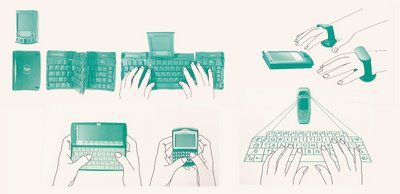During the first week of November i attended a talk by Professor David Garcia on Digital Cultures and their impacts on Knowledge, Networks and Freedom at the University of Portsmouth.
During this talk David discussed areas that very much interested me and i considered how they could be implemented in the Designing for Digital Devices.
He talked about how in Italy it is well known and understood that after a certain time in the evening, when all television broadcasting has finished, a group of people will often hijack the TV broadcasting to broadcast their own messages. They are not necessarily breaking the law but the area that interested me the most was that these people were using the 'downtime' of this platform to capture an audience. They were manipulating technology to their advantage and using it in such a way that had never really been considered.
I was able to apply these ideas when considering designing for digital devices as i started to think about using the technology that is already available to us and using it in such a way that hadn't been considered and in a way that it hadn't been designed for. For example i developed the idea of using the camera on our mobile phone to pay for things. The user would point the camera at a barcode say for example a vending machine and then send this picture off and the cost of the item from the machine would be deducted from the users credit. This could also be used by way of SMS (short messaging service), the consumer could fill out the code on the machine and then send this text message off to the vending machine company e.g. Coca Cola and they would receive a reply containing a code that they would enter into the machine in order to receive the product. This idea could be seen to take more time than the standard approach of just entering money however it would save time if the consumer did not have any change on them at the time.
I have seen this idea used before but in a different way. Frank Lantz, with help from Mattia Romeo and Dennis Crowley created a big urban game called Conquest. The game involved a group of people competing with each other to take over certain urban areas. This would be accomplished by taking pictures of semacodes, which are two-dimensional barcodes that can be scanned and decoded with a camera phone. These semacodes would be placed on particular objects within the environment and then the participants would have to take a picture of the code in order to conquer that area. Again this is a very clever way of using current technology but in such a way that it was not intended.
CLICK HERE to visit the Conquest homepage
"We make computers and computers make us'' this is an area in which David Garcia touched on but it did capture my thoughts. When i thought about this statement more it made me consider how this really is true. The world we live in today is in such a contrast to that of 5, 10, 20 years ago and why? well, because our lives are adjusted as these digital platforms become more of a part of our lives. We create these devices to make our day-to-day processes more efficient, and as a result our day-to-day behaviour changes. For example the media no longer controls us as we can consume this content wherever and whenever we like. Yes, i still believe the media can have an influence over the audience and often shape our social and cultural identities through social grouping, but we consume it on-the-go and as a result i feel people discuss their opinions a lot less therefore these devices are contributing to making us who we are as a person.
CLICK HERE for David's Blog






